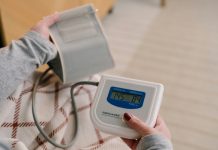
Monitoring your blood pressure at home is an essential part of managing hypertension, commonly known as high blood pressure.
This condition impacts millions of people worldwide and is often referred to as the “silent killer” because it doesn’t usually show obvious symptoms, yet it greatly increases the risk of heart disease and stroke.
Regular home checks can help keep track of your blood pressure and confirm if your treatment is working effectively.
While blood pressure is traditionally measured at a doctor’s office, this method can sometimes provide misleading results due to “white coat hypertension,” where the stress of being in a medical setting can temporarily elevate your blood pressure.
Monitoring from home helps to avoid this issue by providing a more accurate reflection of your blood pressure throughout your daily life.
The frequency of home blood pressure monitoring can vary based on factors like the severity of your hypertension, the current stage of your treatment, and your specific health goals.
For those recently diagnosed or starting new medications, it is advisable to measure your blood pressure several times a week, or even daily.
This frequent monitoring helps your healthcare provider make informed decisions about adjusting medications or treatment plans to suit your needs.
Once your blood pressure is controlled with treatment, you might not need to monitor it as often. For those with stable hypertension and no additional major health concerns, reducing the frequency to a few times a month might be sufficient.
Nevertheless, maintaining regular monitoring over the long term is crucial to detect any changes that might necessitate a reevaluation of your treatment approach.
The American Heart Association (AHA) emphasizes the importance of regular home monitoring for individuals with hypertension. They recommend measuring your blood pressure at consistent times each day, ideally in the morning and evening.
To ensure accuracy, it’s important to use a reliable arm-cuff monitoring device and to follow proper procedures, such as sitting quietly for a few minutes before taking a reading.
Studies have validated the benefits of home monitoring, showing that individuals who regularly track their blood pressure at home generally manage their condition better than those who rely solely on measurements taken at the doctor’s office.
This better management can help decrease the risk of severe complications like heart attacks or strokes.
Keeping a log of your blood pressure readings, either in a simple notebook or through a digital app on your smartphone, is also helpful. This log can be shared with your healthcare provider during medical appointments to provide a comprehensive view of your blood pressure over time.
Engaging actively in tracking your health data can enhance your involvement in your own care and improve overall management of your condition.
For those worried about the expense and complexity of home monitoring, modern blood pressure monitors are typically affordable, user-friendly, and available at most pharmacies or online. They offer a practical solution for anyone needing to keep a close eye on their blood pressure.
In summary, while the frequency of checking your blood pressure at home may vary depending on individual circumstances, it is clear that regular monitoring is crucial for effective management of hypertension.
By staying informed and collaborating closely with their healthcare providers, individuals can better control their blood pressure and significantly lower their risk of serious health issues.
If you care about high blood pressure, please read studies that early time-restricted eating could help improve blood pressure, and natural coconut sugar could help reduce blood pressure and artery stiffness.
For more information about blood pressure, please see recent studies about added sugar in your diet linked to higher blood pressure, and results showing vitamin D could improve blood pressure in people with diabetes.
Copyright © 2024 Knowridge Science Report. All rights reserved.



